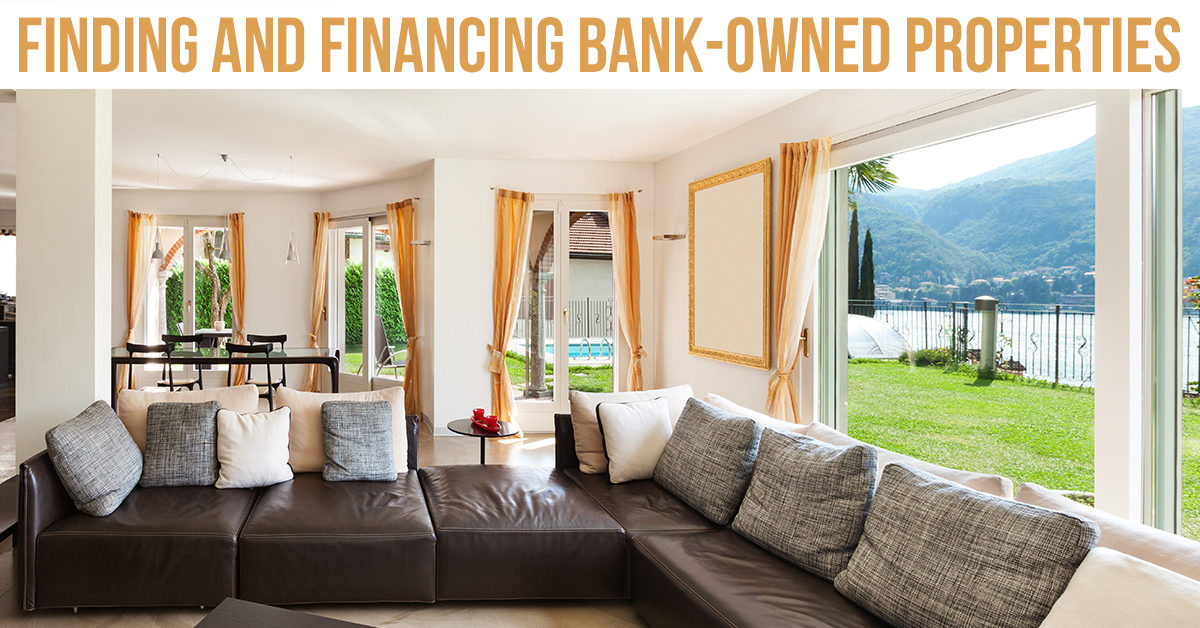How to Find and Finance Bank-Owned Properties
Home prices are still rising — they’re currently averaging just below all-time highs set in 2006, according to the Case-Shiller Home Price Indices. Combine that with slim housing inventory in many markets, and you may believe you’ve missed the opportunity to buy your first, or your next, home.
But bank-owned properties, also known as real-estate owned houses, could be an affordable option for first-time or move-up homebuyers. Lenders are anxious to unload repossessed properties, and without emotional ties, they’re often more inclined to sell a property below market value.
A ‘great investment’
“I was kind of homeless!” Sheila Asseline of South Lake Tahoe, California, says, laughing as she recounts her housing situation of five years ago. “I was living with my daughter and her husband because I had sold a house and hadn’t found a replacement property.”
But then she got a call from her real estate agent, telling her about a bank-owned house that had just been listed on the market.
“I just jumped on it because I thought it was going to be a good investment. And it turned out to be a great investment.” With cash in hand from the sale of her previous home, Asseline acknowledges she was at an advantage. In fact, her offer on the house was accepted over a higher offer from another would-be buyer because that bid was contingent on obtaining financing.
“I found the process extremely simple,” she adds. “I put in an offer, and [the bank] countered back, and I accepted it. It turned out to be really easy.” Two weeks later, the sale closed.
After a few years, and kitchen and master bath updates, she sold the house and “did very well.”
Where to find bank-owned properties
Real-estate owned houses aren’t found only in the most depressed real estate markets. In October 2016, the five markets that saw the highest REO sales on Hubzu, a home-auction website that sells lender-foreclosed homes, were:
- Chicago
- Baltimore
- Washington, D.C.
- New York City
- Tampa-St. Petersburg
But with the housing crisis fading, are the best deals gone?
After declaring the foreclosure crisis over in September, real estate research firm Attom Data Solutions noted a 27% increase in foreclosure activity the very next month. In addition, at the end of the third quarter, vacant bank-owned properties were up 67% from one year ago.
“Even in the best of times, there is some percentage of homes that get foreclosed,” says Steve Udelson, president of Altisource Online Real Estate, which operates Hubzu.com. For buyers who aren’t finding affordable homes in their target neighborhoods, it’s well worth their time to investigate foreclosed homes, he adds.
REO properties are often found on multiple listing services. Websites like Hubzu.com, RealtyTrac and Auction.com list REO homes for sale and are good sources for hopeful homebuyers to tap.
It’s also worth asking your real estate agent about REO homes in your area.
A note about timing
While buying “distressed” properties can seem complicated, it’s really a matter of getting into the foreclosure process at the right time. There are basically three stages:
- Pre-foreclosure is when the owner of a property who has become late on mortgage payments receives a notice of default from the lender.
- A public auction is held if the loan defaults. This is when professional investors battle it out, making lowball offers. Many times, because the bids are too far below market value, the bank will simply repossess the property.
- A bank-owned sale or auction. This is where Udelson says potential homebuyers have the greatest opportunity. At this point, you have a seller who is motivated to sell. Banks want to get these properties off their books as soon as possible, he says.
One loan to buy and rehab
In recent years, financing has become more flexible. One federal loan program now allows you to buy a qualifying house and finance improvements and repairs as a part of the loan package to purchase the property; the Federal Housing Administration-backed 203(k) loan allows the mortgage to be based on the home’s value after the rehab, or the home’s purchase price and cost of repairs, whichever is less. Mortgage loan limits vary by location.
Many banks also offer conventional purchase-and-renovate loan packages.
The article How to Find and Finance Bank-Owned Properties originally appeared on NerdWallet.


